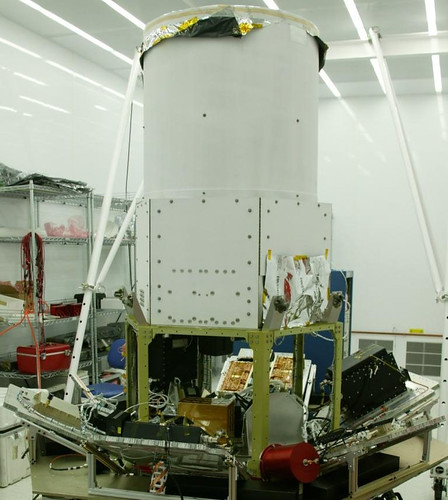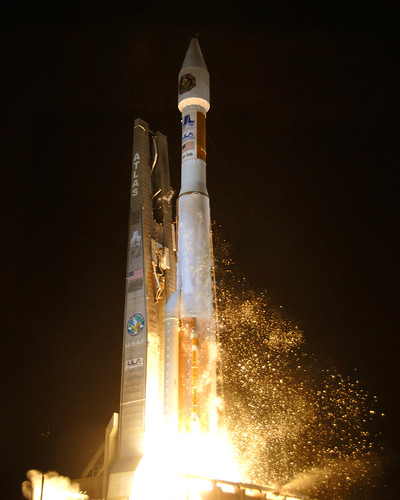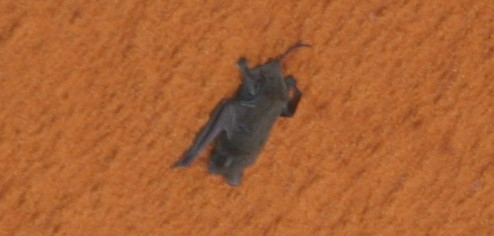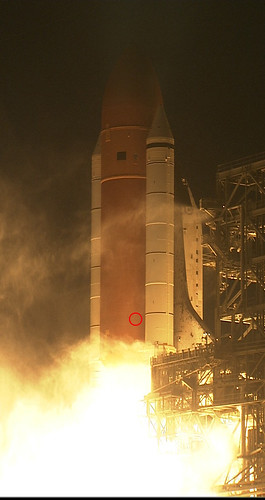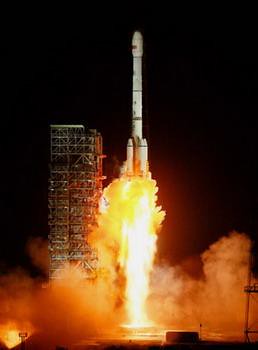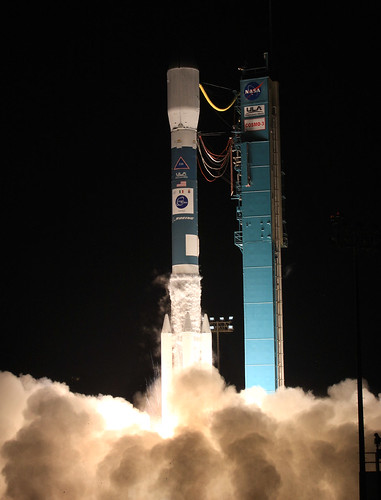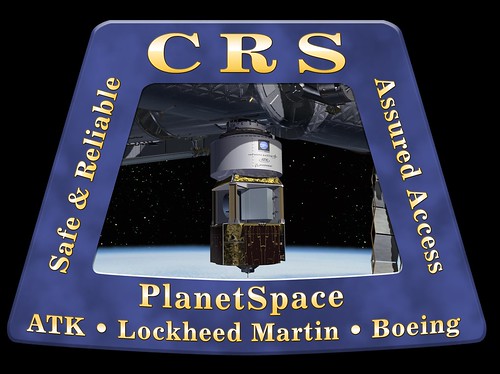
That’s the live view from Cape Canaveral’s Launch Complex 39, where the Space Shuttle will launch from in November.
Meanwhile, lots of activity at Launch Complex 36 this week, too. The U.S. Air Force announced it will soon host civil and commercial payload launches:
Officials with the Air Force and Space Florida made history during a dedication ceremony held here Oct. 22 when Space Launch Complex 36 officially was made available for operational use by the State of Florida, subject to completion of the environmental impact analysis.
Attending the historic ceremony were Florida Governor Charlie Crist; Florida Lt. Governor Jeff Kottkamp; Space Florida President Steve Kohler; Lt. Gen. William Shelton, 14th Air Force commander; and Brig. Gen. Susan Helms, 45th Space Wing commander.
General Shelton said Air Force leaders supported the initiative because it will make it easier for commercial providers to launch from the U.S. Having domestic launch options provides the U.S. with solid foundation for national security.
"This is a great partnership that is mutually beneficial to both the Air Force and the state," he said. "We take great pride in helping foster the success of the commercial space sector; I’m confident the spirit of innovation and the cooperation that made this a reality will continue in the years ahead."
Governor Crist also had positive things to say about the agreement.
"Florida has always been home to big ideas. The entrepreneurial spirit is woven into the DNA of Florida’s economy," the governor said. "And thanks to the Air Force’s decision, the door is now open to innovation and space opportunities never seen before. In tough economic times, it is important we do not sit idly by, but that we invest in economic opportunities for the future.
"What a tremendous opportunity to ensure that space exploration is a top priority and that the U.S. remains a leader right here from Florida," he said.
According to Space Florida officials, the reconfiguration of Launch Complex 36 will strengthen not only the state’s aerospace industry but other growing economic sectors such as biotechnology and environmentally friendly energy technology vital to Florida’s future. The launch complex will support light- to medium-lift vehicles that go into low-Earth orbit and beyond.
Space Florida’s president sees this ground-breaking ceremony as a great beginning, both literally and figuratively.
"The Air Force assignment of Launch Complex 36 is an important next step to extending access to space," said Steve Kohler, Space Florida president.
"We are now making that available to both defense and security initiatives," he said, "with multiple commercial payloads and launch activities for both civil and private space businesses that want to launch from Florida. This direction by the Air Force, together with the tremendous support by the state, opens the door to attracting, supporting and sustaining national and international aerospace business here in Florida."
This effort also is in line with the mission of the 45th SW, according to General Helms.
"Our primary mission here is to assure access to the high frontier," she said. "This proposal better enables us to execute that mission. It’s the ultimate ‘win-win’ situation for both the Air Force and the State of Florida."

Hours later, PlanetSpace announced it is ready to start, spurring Florida Today to report it will generate 350 jobs and a $300 million economic impact:
PlanetSpace, a consortium of ATK, Lockheed Martin and Boeing, announced Wednesday a proposal to launch a 158-foot solid-fuel rocket by 2011 from the pad at Cape Canaveral, which the Air Force has agreed to lease to Space Florida. The rocket could carry about 2 metric tons of cargo to the International Space Station.
NASA aims to announce on Dec. 23 whether PlanetSpace, or a competitor, has been chosen to provide the service. The company says its plan would create 350 jobs in Florida, with a potential economic impact of $300 million. PlanetSpace said it has at least two competitors for the NASA award.
Using state money, Space Florida now will start turning the abandoned launch complex into a serviceable launch pad, which it hopes will attract other commercial customers.
"The door is now open to more innovation," said Gov. Charlie Crist, who spoke Wednesday at the groundbreaking of the launch complex upgrade.
Complex 36 is now just a domed bunker beside a concrete slab at Cape Canaveral. The Air Force, which controls the property, intends to lease the site to Space Florida after an environmental impact analysis.
Space Florida, a state economic development agency focused on aerospace projects, then would build a launch facility that could accommodate medium to light rockets. The state plans a commercial launch zone that would reduce bureaucratic requirements and eliminate tariffs, similar to a free trade zone.
"This is a rebirth of a historical launch complex," Space Florida President Steve Kohler said.
Kohler said he is negotiating with several launch companies that may use the pad. The state has appropriated $14.5 million for the project and has bonding authority for another $40 million.
"We hope that the first phase of development could reach $55 million to build it out," Kohler said.
PlanetSpace hopes to be the first to use the new site in 2011. Under NASA’s Commercial Resupply Services program, the group is competing for a $3.1 billion government contract to move 20 metric tons of cargo to the space station with 10 to 12 rocket launches.
We see which bidder will be celebrating on 23 December 2008, with a great big contract under the tree (Solicitation Number: NNJ08ZBG001L).

